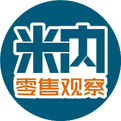Dampness and exposure to cold can easily lead to symptoms such as colds, fevers, general fatigue, and lower back pain. Office workers, who spend long hours sitting in front of computers, are particularly prone to conditions like shoulder periarthritis. Traditional cupping therapy can alleviate these symptoms, but did you know that a more effective method is not the commonly used stationary cupping, but rather moving cupping?
What symptoms are suitable for moving cupping?
Heavy dampness, loss of appetite, a feeling of heaviness throughout the body, and loose stools are all manifestations of excessive dampness. Moving cupping is particularly effective for these conditions. It is also suitable for patients with neck, shoulder, and back pain, as well as those suffering from colds and fevers. Moving cupping combines the effects of guasha (scraping therapy) and stationary cupping, allowing for slight bleeding of the skin’s capillaries, which stimulates the immune response, detoxifies, and clears heat. Additionally, it helps to relax adhered tissues, achieving the effects of relieving muscle tension, promoting blood circulation, and alleviating pain.
Data shows that most patients seeking moving cupping in TCM clinics are those with colds, lower back pain, excessive dampness, and cold sensitivity in the back and limbs. This is especially true for individuals who spend long hours in air-conditioned rooms or sitting at desks, as maintaining a single posture for extended periods can lead to lower back pain due to cold exposure and blood stagnation. Typically, patients feel significantly relieved after just one session of moving cupping. However, it is not suitable for patients with skin lesions, scars, bleeding tendencies, or for pregnant women in the lumbar and abdominal areas.
Mastering the technique for easy moving cupping
In cupping therapy, the method of leaving the cup in place for a certain period is known as stationary cupping, while the technique of repeatedly pushing and pulling the cup up and down is called moving cupping. With the right tools and techniques, you can perform moving cupping at home.
Choose cups with a large opening: Using cups with a large and smooth opening makes the process easier, typically opting for medium-sized cups. However, it is best to use vacuum suction cups for safety.
Select areas with thick skin: Whether for dampness removal, fever reduction, or alleviating lower back pain, the back is an excellent choice. The Bladder Meridian (Pangguang Jing) and Governing Vessel (Dumai) are located on the back, and stimulating these areas can prevent and treat certain conditions while invigorating Yang energy, especially beneficial for patients with poor constitution, muscle soreness, and cold sensitivity.
Apply lubricant first: To reduce friction and discomfort, apply petroleum jelly, vegetable oil, or sesame oil to the back before moving cupping.
Attach the cup: For excess heat conditions, the suction strength can be strong, and the speed of moving the cup can be faster; for deficiency conditions, the cup should be applied more lightly, with slower and shorter movements.
Push and pull in all directions: After attaching the cup, start from one side of the Bladder Meridian on the back, moving from top to bottom, and repeat the push and pull at least three times. Then, move to the Governing Vessel and the other side of the Bladder Meridian. Next, push and pull from the upper back from left to right, keeping the cup on the skin for 1-2 seconds until the skin becomes slightly red or purplish. The entire moving cupping session should last about 3-5 minutes.
It is important to note that during the moving cupping process, there may be instances of repeated air leakage; simply reattach the cup without affecting the results. After moving cupping, drink plenty of water, avoid bathing immediately, and ensure warmth to prevent wind invasion, which may exacerbate symptoms. Additionally, avoid moving cupping near the heart and major blood vessels.

